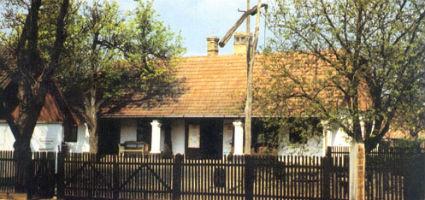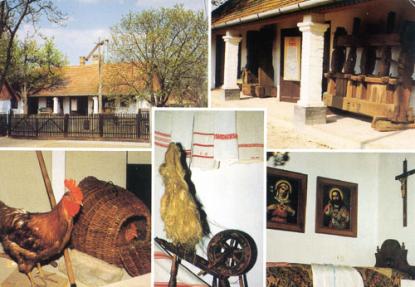2024. November 24. Sunday
Museum of Hungarian Agriculture - The Country House of Cece - Cece
 |
Address: 7013, Cece Árpád utca 46.
Opening hours: 01.04-01.11.: Sat, Sun, bank holidays 10-18
(Also at other times on prior notice) |
A sense of beauty and simplicity accompanies the visitors through this exhibition, which represents the humanitarian feelings in a number of motives and patterns.

Nice sheperd's rods, jugs, bells, musical wall picture, and among these the tools of land cultivation are displayed.
We can see nice and precious collections of the tools used in animal husbandry (bells, tremming scissors, scourges, etc.
The main ornament of the big house is sorrounded by some utensils and homespuns.
We can also see a confirmation costume, which symbolises the puritan simplicity. The hand-made embroidery on it makes it a very attractive and wonderful item.
Among the personal objects there are shaving mirrors and sets, a needlework basket, a rosary and a prayer-book. There is a wooden cradle holding a baby inside. Wooden baby pram and innumerable contemporary objects are also found in the museum.
The wooden herdsman box bears the twofold characteristics of the really valuable things: the artistic work and the formation of the durable storage place. The bin is indicated to be made in 1820.
The exhibition can be interesting to those, who only bump into the museum by accident. Many objects will recall traditional items we still use today, but in a renewed form, such as the coal iron, the loom, etc.

Nice sheperd's rods, jugs, bells, musical wall picture, and among these the tools of land cultivation are displayed.
We can see nice and precious collections of the tools used in animal husbandry (bells, tremming scissors, scourges, etc.
The main ornament of the big house is sorrounded by some utensils and homespuns.
We can also see a confirmation costume, which symbolises the puritan simplicity. The hand-made embroidery on it makes it a very attractive and wonderful item.
Among the personal objects there are shaving mirrors and sets, a needlework basket, a rosary and a prayer-book. There is a wooden cradle holding a baby inside. Wooden baby pram and innumerable contemporary objects are also found in the museum.
The wooden herdsman box bears the twofold characteristics of the really valuable things: the artistic work and the formation of the durable storage place. The bin is indicated to be made in 1820.
The exhibition can be interesting to those, who only bump into the museum by accident. Many objects will recall traditional items we still use today, but in a renewed form, such as the coal iron, the loom, etc.
